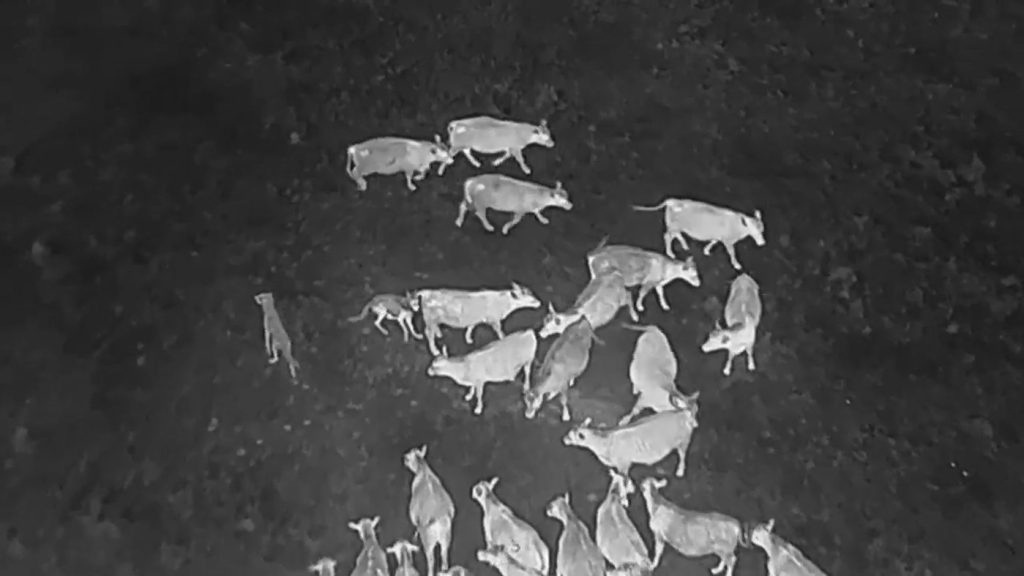For centuries, humans have employed various methods to deter wolves from preying on livestock. With the advent of technology, a group of biologists near the California-Oregon border is now utilizing drones to play sounds aimed at scaring these apex predators away from cattle. The ongoing experiment includes blasts of AC/DC's "Thunderstruck," clips from movies, and even recorded human voices.
The reintroduction of gray wolves in the mid-1990s to places like Idaho and Yellowstone National Park has led to their significant population recovery. By the early 21st century, gray wolves were removed from the endangered species list in the Northern Rockies. Today, these wolves roam extensively in regions across Washington, Oregon, and northern California, as well as numbering in the thousands near the Great Lakes.
This steady growth in the wolf population has resulted in escalating conflicts with ranchers. To protect their livestock, ranchers have resorted to various measures, including electrified fencing, guard dogs, and even drone technology. In instances where non-lethal methods have proven ineffective, some authorities have approved the killing of wolves, as recently seen in Washington state.
In 2022, gray wolves were responsible for the deaths of approximately 800 domesticated animals across ten states. To mitigate such conflicts, scientists from the USDA Animal and Plant Health Inspection Service have developed drone hazing techniques using thermal imaging to monitor wolf activity, particularly at night when they are most active. Research indicated that the introduction of human voices through drones successfully disrupted wolf hunts, confirming that unexpected stimuli can effectively frighten these animals.
The UAVs are loaded with various pre-recorded sounds—music, gunshots, fireworks, and human voices—starting with randomized clips like "Thunderstruck" or memorable movie scenes. If initial attempts fail, drone operators can improvise, even shouting directly through the drone's microphone or switching sounds to different tracks. A popular choice among operators is the cover of "Blue on Black" by Five Finger Death Punch, with lyrics suggesting retreat.
This summer, drone patrols have been extended into high-conflict areas along the Oregon-California border, reflecting a growing commitment to monitor wolf interactions and protect cattle. Despite the advances in technology, concerns remain about whether wolves can acclimate to the presence of drones, similar to how they have learned to ignore other forms of deterrents in Europe.
Environmental advocates are hopeful about the drone strategy, noting that wolves tend to be wary of novel experiences. However, there are significant obstacles to widespread implementation. Drones equipped with night vision and loudspeakers can cost around $20,000, require specialized training, and often struggle in wooded terrains, making them impractical for many ranchers.
Ranchers in Northern California who have experienced USDA drone patrols have reported reduced livestock fatalities. Mary Rickert, who owns a cattle ranch near Mount Shasta, expressed gratitude for the drone interventions but remained skeptical about their long-term effectiveness. She fears that wolves might eventually realize drones are harmless noise-makers, leading to recurring issues. If such strategies fail, Rickert considers extreme measures, such as obtaining permits to shoot wolves attacking her livestock.
As ranchers grapple with the challenges of wolf predation, the potential for non-lethal deterrent technologies to alleviate livestock losses remains uncertain. Meanwhile, Paul Wolf, USDA's southwest district supervisor, shared anecdotes of positive outcomes during pilot-induced interactions, where conversing with a curious wolf led to its hasty retreat from cattle.










